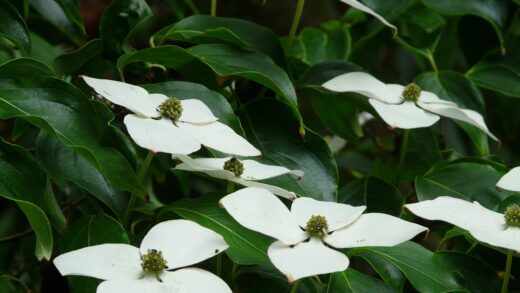Effective pruning and cutting back are essential horticultural practices that transform the common mallow from a potentially unruly plant into a well-behaved and exceptionally floriferous garden specimen. While it may seem counterintuitive to remove parts of a plant to improve its health and appearance, a well-timed and correctly executed pruning strategy is key to maximizing its floral display, maintaining a desirable shape, and preventing disease. This professional guide will explore the various reasons for pruning common mallow, from the simple yet vital task of deadheading to more substantial rejuvenation cuts. By mastering these techniques, you can encourage continuous blooming, improve plant vigor, and ensure your mallow remains a healthy and attractive feature throughout the entire growing season.
The philosophy behind pruning common mallow is not one of rigorous and formal shaping, but rather one of gentle guidance and timely maintenance. This is a plant with a naturally informal, cottage-garden character, and the pruning approach should respect this. The main goals are to prolong the flowering period, encourage a bushier and more stable structure, improve air circulation to deter disease, and maintain general garden tidiness. Each type of cut, from a delicate snip of a faded flower to a hard cutback at the end of the season, serves a specific and important purpose in the plant’s annual life cycle.
Understanding the plant’s growth habit is fundamental to knowing how and when to prune. Common mallow typically grows as a biennial or a short-lived perennial, producing tall, upright flower spikes from a basal rosette of leaves. The flowers open sequentially along these stems over a very long period. This flowering habit is what makes practices like deadheading so effective. By preventing the plant from completing its reproductive cycle (i.e., setting seed), you are essentially tricking it into continuing to produce more flowers in a sustained effort to reproduce.
It is also important to approach pruning with the right tools and a focus on plant hygiene. A sharp, clean pair of secateurs or garden snips is essential for making clean cuts that will heal quickly and minimize the risk of introducing disease. It is good practice to regularly disinfect your pruning tools, especially when moving between different plants or after cutting away diseased material. This simple step can prevent the accidental spread of pathogens like the spores that cause mallow rust, ensuring your maintenance activities are purely beneficial.
The primary goals of pruning
The practice of pruning common mallow is driven by several key horticultural objectives, all aimed at improving the plant’s health and aesthetic appeal. The most prominent goal is to promote and extend the flowering season. Common mallow has an indeterminate flowering habit, meaning it will continue to produce new flower buds along its stems as long as conditions are favorable. By regularly removing the spent flowers, a process known as deadheading, you prevent the plant from diverting its energy into seed production and instead redirect that energy back into creating more blooms. This simple task can be the difference between a plant that flowers for a few weeks and one that flowers for several months.
More articles on this topic
A second major goal is to manage the plant’s size and shape. While its upright habit is one of its charms, common mallow can sometimes become tall and leggy, especially if it is not grown in full sun. This can lead to the stems flopping over, particularly after heavy rain or in windy conditions. Selective pruning, or “pinching back,” early in the season can encourage the plant to produce more side shoots, resulting in a bushier, more compact, and sturdier plant that is better able to support the weight of its flowers without needing to be staked.
Improving the overall health of the plant is another critical objective of pruning. This is primarily achieved by enhancing air circulation through the foliage. A dense mass of leaves can trap humidity, creating the perfect microclimate for fungal diseases like rust and powdery mildew to thrive. By selectively thinning out some of the stems or removing lower leaves that are crowded, you allow air to move more freely through the plant, which helps to keep the foliage dry and significantly reduces the risk of disease. This is a classic example of preventative, cultural disease control.
Finally, pruning serves the essential purpose of sanitation and garden hygiene. This involves removing any part of the plant that is dead, damaged, or diseased as soon as you see it. This not only improves the plant’s appearance but also removes potential sources of infection and prevents pests from finding a place to shelter. The most significant sanitation pruning occurs at the end of the season, when the entire plant is cut back to the ground after being killed by frost, removing all of the old growth and preventing any overwintering of pests or disease spores.
Deadheading for continuous blooming
Deadheading is the single most effective pruning technique for maximizing the flower production of common mallow. It is a simple task that involves the removal of faded flowers before they have a chance to develop into seed pods. The plant’s primary biological imperative is to reproduce, and it does this by producing seeds. Once it has successfully created seeds, its hormonal signals change, and the impetus to produce more flowers diminishes significantly. By consistently removing the spent blooms, you interrupt this cycle and keep the plant in a continuous state of flowering.
More articles on this topic
The process of deadheading common mallow is straightforward. As the individual flowers along the tall spikes fade and wilt, they can be snipped off. You can do this individually, or you can wait until most of the flowers on a particular stem have finished and then cut the entire flower stalk back. The best place to make the cut is just above a set of healthy leaves or a side shoot. This encourages the plant to branch out and produce new flower stems from the point of the cut, leading to a fuller plant and even more blooms.
The frequency of deadheading will depend on how tidy you want the plant to look and how dedicated you are to maximizing its bloom. For the best results, a quick pass through the garden every few days to snip off the most prominent faded flowers is ideal. This not only keeps the plant looking fresh and attractive but also ensures that its energy is constantly being channeled into new bud formation. It can be a relaxing and rewarding garden task, providing an opportunity to closely observe your plants.
While deadheading is primarily done to encourage more flowers, it also serves to control the plant’s spread. Common mallow can self-seed prolifically, and while this can be desirable in an informal cottage garden or a wildflower meadow setting, it can become a nuisance in a more formal border. If you do not want dozens of volunteer mallow seedlings popping up all over your garden the following year, diligent deadheading is essential to prevent the formation and dispersal of seeds.
Pruning for shape and air circulation
While common mallow does not require formal shaping like a hedge, some structural pruning can greatly enhance its appearance and health. One of the most useful techniques is known as the “Chelsea chop,” a method often used on late-flowering perennials. This involves cutting back the entire plant by about one-third to one-half in late spring (around the time of the Chelsea Flower Show in the UK, hence the name). This may seem drastic, but it delays the flowering slightly while encouraging the plant to branch out, resulting in a much bushier, more compact, and sturdier plant with more, albeit slightly smaller, flower stems. This technique is particularly useful for preventing the plant from becoming leggy and flopping over later in the season.
If a full “Chelsea chop” seems too dramatic, a more selective approach can be used to achieve a similar result. You can simply pinch back the growing tips of the main stems when the plant is about 30 centimeters tall. This removes the apical dominance and stimulates the growth of side shoots from the leaf axils further down the stem. This will create a denser, more self-supporting plant. You can also thin out the plant by completely removing a few of the weakest stems from the base of the clump, which is an excellent way to improve air circulation.
Improving air circulation is a key benefit of structural pruning. Mallow rust, the plant’s main nemesis, thrives in the still, humid air that gets trapped within a dense clump of foliage. By thinning out the stems, you allow breezes to pass through the center of the plant, which helps to keep the leaves dry and makes conditions much less favorable for the development and spread of fungal spores. This preventative pruning is a far more effective and sustainable method of disease control than relying on chemical fungicides.
When making these pruning cuts, always aim to cut back to just above a leaf node or a side shoot. This is where the plant’s growth hormones are concentrated, and it will encourage new growth to sprout from that point quickly. Avoid leaving long, bare stubs, as these can die back and provide an entry point for disease. Using sharp, clean tools will ensure that the cuts are clean and heal rapidly, minimizing the stress on the plant.
Hard pruning for rejuvenation
In some cases, a more drastic approach to pruning is needed during the growing season. This is often referred to as a rejuvenation or hard pruning. If a common mallow plant has become overwhelmed by a severe case of rust disease, or if it has become hopelessly leggy and has finished its main flush of flowers by mid-summer, cutting it back hard can give it a fresh start. This involves cutting all the stems and foliage right back to the basal leaves, or even down to about 10-15 centimeters from the ground.
This hard pruning may look severe, but a healthy, well-established mallow plant will respond with surprising vigor. After being cut back, give the plant a deep watering and perhaps a light feed with a balanced liquid fertilizer to support the new growth. Within a few weeks, a fresh flush of healthy new leaves will emerge from the base. While this new growth may not always have enough time to produce a second full flush of flowers, it will often result in a much healthier and more attractive clump of foliage for the remainder of the season.
The best time to perform such a hard pruning is immediately after the first main wave of flowering has finished, typically in mid-summer. Doing it at this time provides the plant with enough of the growing season to recover and build up sufficient energy reserves in its roots to survive the following winter. Cutting the plant back too late in the season is not recommended, as the new growth will be too tender to withstand the first frosts.
This technique is a valuable tool for managing disease. If a plant is covered in rust, simply removing the infected leaves can be a losing battle. By cutting the entire plant back, you remove all the infected material from the garden at once. The new growth that emerges will often be free of the disease, especially if the weather conditions have become less favorable for the fungus (e.g., hotter and drier). This gives you a clean slate and a much healthier-looking plant for the rest of the year.
End-of-season cleanup
The final act of pruning in the common mallow’s annual cycle is the end-of-season cleanup, and it is a crucial step for maintaining garden hygiene and ensuring the plant’s health for the following year. This task should be performed after the first hard frosts of autumn have killed the top growth of the plant. At this point, the leaves and stems will be brown, withered, and lifeless, indicating that the plant has entered its winter dormancy and all its energy is stored safely in its root system.
Using a sharp pair of shears or secateurs, cut all of the dead stems and foliage back to just a few inches above the ground. Leaving a short stubble of about 5 to 10 centimeters makes it easier to remember the plant’s location over the winter and protects the crown from accidental damage. This cleanup makes the garden look much tidier over the winter months, but its main purpose is sanitation.
The most important reason for this autumn cutback is to remove any overwintering pests or disease spores. The dead foliage and hollow stems are a perfect place for fungal spores, such as those that cause mallow rust, to shelter over the winter, ready to reinfect the new growth in the spring. By removing and destroying this material (do not add it to your compost pile if it was diseased), you significantly reduce the chance of the disease recurring the following year. It is one of the most effective preventative measures you can take.
Once the plant has been cut back, it is the ideal time to apply a winter mulch if you live in a cold climate. A layer of shredded leaves or straw applied over the crown after the ground has started to freeze will help to insulate the roots and protect them from the damaging effects of freeze-thaw cycles. This combination of a thorough cleanup and a protective mulch gives your common mallow the best possible preparation for enduring the winter and emerging strong and healthy the following spring.




















